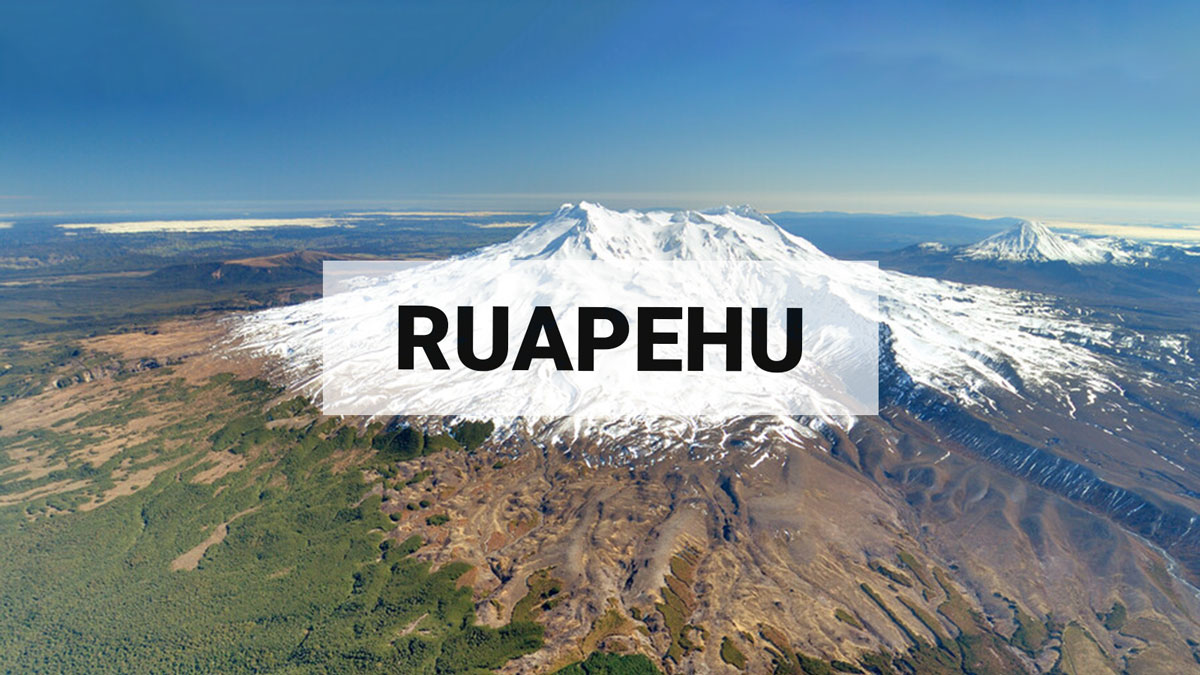
Uncommon style of earthquake activity at Mt Ruapehu. Volcanic activity remains low, and the Volcanic Alert Level remains at 1.
In addition to a recent drop in lake temperature, in recent weeks Ruapehu has experienced some minor earthquake activity. Although the nature of the earthquakes is quite uncommon for Ruapehu, our analyses since our last bulletin do not raise any concerns. Other monitored parameters have not changed since last week’s bulletin, and volcanic activity remains low. The Volcanic Alert Level remains at 1 and the Aviation Colour Code at Green.
In early March 2024, we first observed an uncommon style of small earthquakes at Ruapehu. Subsequent re-examination of seismic data has revealed those earthquakes commenced at least as early as mid-February.
The earthquakes are small and were initially difficult to identify without careful examination of the data as they are uncommon at Ruapehu and only the larger examples are detected by our automatic systems. Over the last month, we have seen a maximum of six of these earthquakes a day, and on many days none at all.
Each earthquake consists of up to about 10 minutes of ground shaking, and is composed of a number of similar sub-events. While we are able to determine a location for some of the larger examples, the small size and style of the activity means our locations, especially depth, are quite uncertain. However, as they are recorded only by monitoring stations on the upper part of the volcano, we speculate that they originate near the summit area of the volcano within a few kilometres’ depth beneath the surface.
As the earthquakes do not typically last more than 10 minutes, they do not constitute volcanic tremor, and that remains low. The earthquakes are also quite different in appearance from volcanic tremor traditionally seen at Ruapehu.
While the earthquakes represent something new at Ruapehu, and we are working on understanding the details of the processes driving them, they are not thought to pose any concerns for eruptive activity. Other monitored parameters have shown no recent changes. The temperature of Te Wai ā-moe (Crater Lake) is now relatively stable at about 24 ºC, recent observations of the lake recognised nothing unusual, gas emissions from Ruapehu remain moderate, and volcanic tremor is low.
Monitoring indicators remain consistent with a low level of volcanic activity. As a result, the Volcanic Alert Level remains at 1. The Aviation Colour Code remains Green.
Mt Ruapehu is an active volcano and has the potential to erupt with little or no warning when in a state of minor volcanic unrest.
The Volcanic Alert Level reflects the current level of volcanic unrest. The Volcanic Alert Level should not be used to forecast future activity.
Volcanic Alert Level 1 indicates the primary hazards are those expected during volcanic unrest: steam discharge, volcanic gas, earthquakes, landslides, and hydrothermal activity. While Volcanic Alert Level 1 is mostly associated with environmental hazards, potential for eruption hazards also exists and eruptions can still occur with little or no warning. Volcanic Alert Levels 3, 4 and 5 are reserved for eruptions with varying impact distances.
For information on access to the Mt Ruapehu area, please visit the Department of Conservation’s website on volcanic risk in Tongariro National Park and follow the DOC Tongariro Facebook page for further updates.
For information about responding to volcanic activity there are guidelines from the National Emergency Management Agency.
GNS Science and its National Geohazards Monitoring Centre continue to closely monitor Mt Ruapehu for further changes.
Steven Sherburn Duty Volcanologist Media Contact: 021 574 541 or media@gns.cri.nz